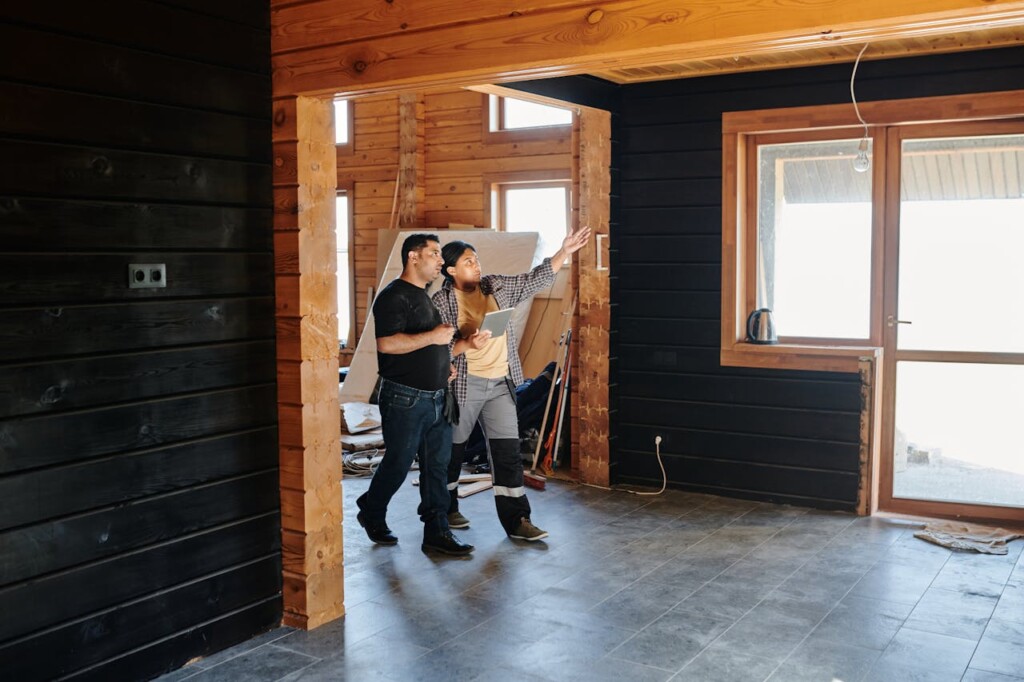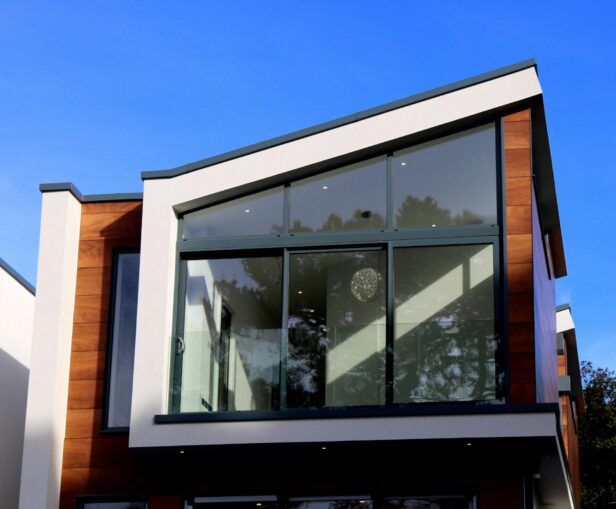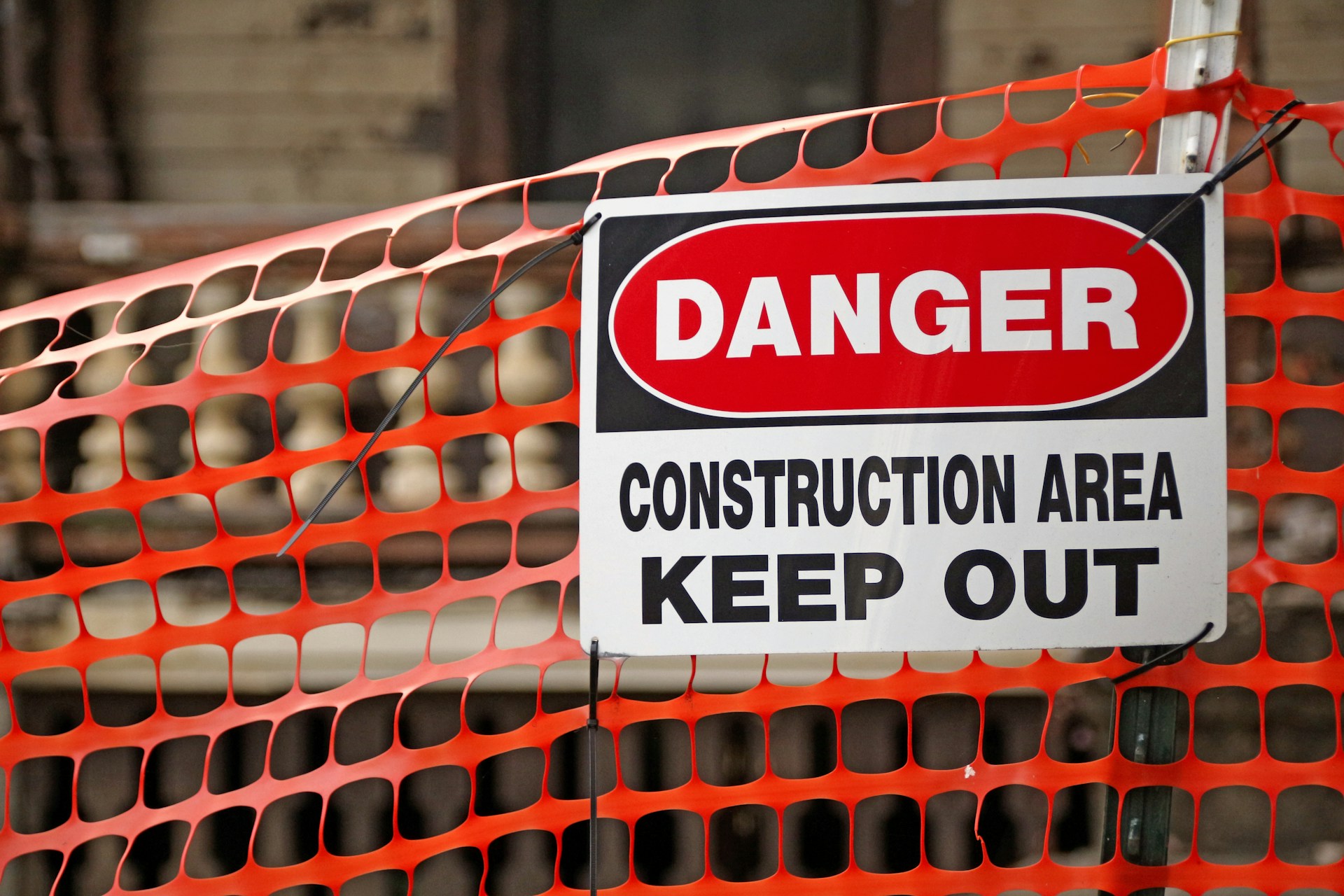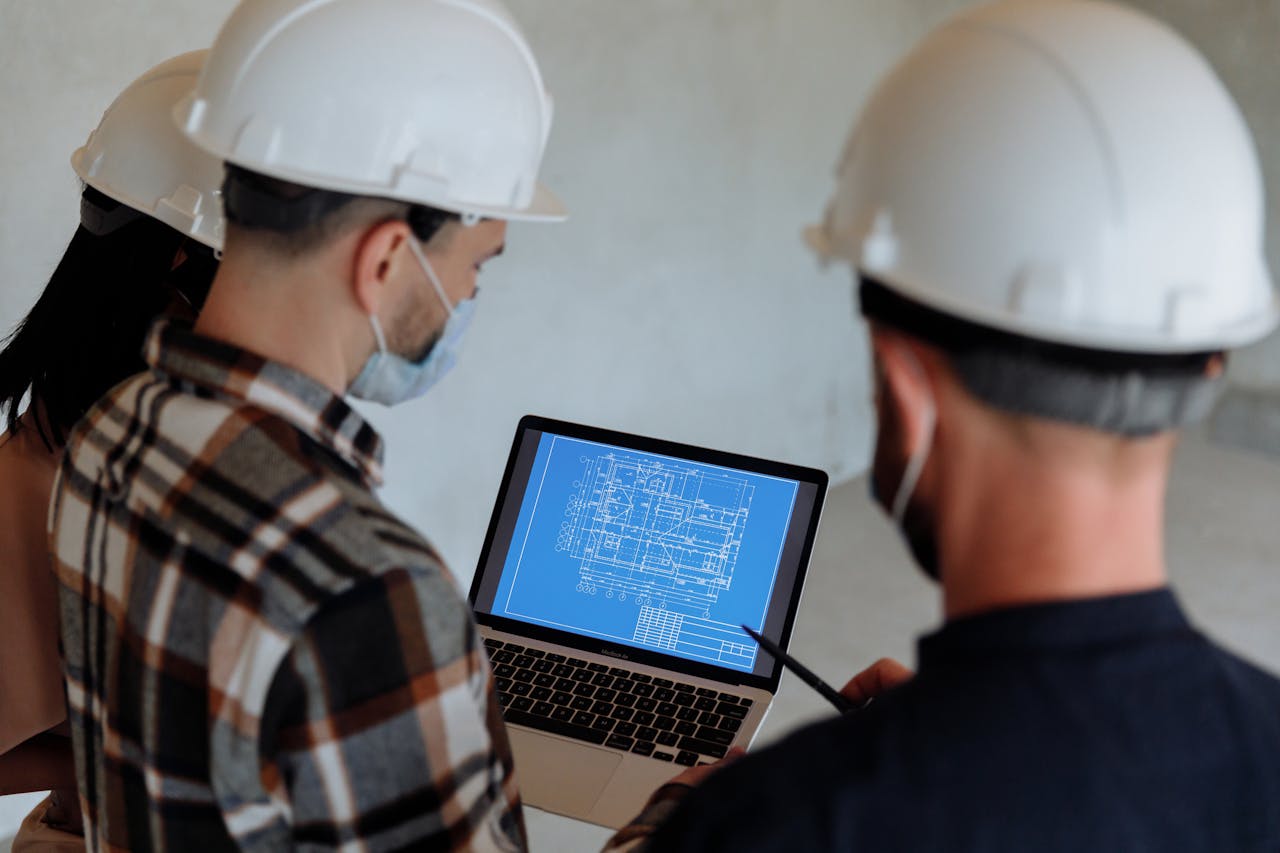For property owners managing aging multi-tenant buildings, renovation can seem like a daunting challenge. With the right approach, it offers an opportunity to significantly boost both value and appeal. Multi-tenant commercial property renovation involves updating or altering the interior and exterior elements of buildings that house multiple businesses. These renovations aim to improve functionality, enhance aesthetic appeal, and adapt existing structures to meet tenants’ evolving needs.
At EB3 Construction, we specialize in managing the complexities of commercial renovations. As tenant improvement (TI) contractors, we collaborate with property owners, managers, architects, and tenants to bring transformative visions to life. Our team handles everything from securing necessary permits to identifying creative, cost-saving solutions that maximize return on investment.
Successful multi-tenant renovations require balancing the unique needs of diverse businesses while adhering to building codes and regulations. We coordinate carefully to minimize disruptions, phasing work strategically across occupied spaces. Our goal is to deliver renovations that not only meet current tenant requirements but also position properties to attract and retain high-quality tenants long-term.
With commercial real estate markets changing rapidly, strategic renovation is essential for maintaining competitiveness. Studies show that well-executed upgrades can increase property values by 10-20% or more. For owners looking to boost ROI and secure the future of their assets, partnering with experienced renovation specialists is key to unlocking a property’s full potential.
What Are the Key Benefits of Multi-Tenant Commercial Renovations?

Renovating a multi-tenant commercial property offers significant benefits that extend beyond simply updating aesthetics. We approach each project strategically to maximize returns for property owners while creating spaces that tenants genuinely want to occupy. Here are some of the key advantages:
Increased Property Value
A key benefit of multi-tenant renovations is the boost to property value. By modernizing systems, upgrading finishes, and improving layouts, we can significantly enhance a building’s market worth. For instance, a recent office renovation project resulted in a 15% increase in property valuation after strategic updates to common areas and tenant spaces.
Enhanced Energy Efficiency
Sustainable upgrades benefit both the environment and bottom line by reducing environmental impact and operating costs. We often incorporate energy-efficient lighting, high-performance HVAC systems, and improved insulation into our renovation plans. These enhancements can result in utility savings of 20-30% annually, which is appealing to both property owners and potential tenants.
Reduced Maintenance Costs
Renovated spaces often require less ongoing maintenance, leading to cost savings for both owners and tenants. By replacing outdated systems and using durable, modern materials, we help minimize the need for frequent repairs. This proactive approach not only saves money but also reduces disruptions to tenant operations.
Increased Tenant Attraction and Retention
In the competitive real estate market, tenants have high expectations for their commercial spaces. Our renovation projects focus on creating environments that meet current market demands, including flexible workspaces, enhanced technological infrastructure, and amenities that promote employee well-being. These improvements make properties more attractive to prospective tenants and encourage existing tenants to renew their leases.
We have witnessed how thoughtful renovations can transform a struggling property into a sought-after address. In a recent project, occupancy rates increased from 70% to 95% within six months of completing targeted upgrades to a retail complex.
| Benefit | Description | Financial Impact |
|---|---|---|
| Increased Property Value | The value of the property is enhanced through modernization and improved layouts. | Property value can increase by up to 15% or more. |
| Enhanced Energy Efficiency | Improved energy efficiency through sustainable upgrades. | Utility savings of 20-30% annually. |
| Reduced Maintenance Costs | Minimized need for frequent repairs due to durable, modern materials. | Cost savings through reduced maintenance efforts. |
| Increased Tenant Attraction and Retention | Updates create appealing environments for tenants, leading to higher occupancy and lease renewals. | Occupancy rates can increase from 70% to 95% within six months post-renovation. |
Meeting Evolving Market Needs
The commercial real estate landscape is constantly evolving, and renovations enable properties to remain relevant. We work closely with property owners to understand emerging trends and incorporate features that will appeal to today’s tenants. This might include creating collaborative spaces in office buildings, improving e-commerce fulfillment capabilities in retail centers, or enhancing digital connectivity throughout the property.
By addressing these key areas through strategic renovations, we help property owners maximize the potential of their multi-tenant commercial spaces. The result is a more valuable, efficient, and desirable property that stands out in a competitive market.
What Types of Multi-Tenant Commercial Renovations Are Most Common?
At EB3 Construction, we often manage various multi-tenant commercial renovation projects to help property owners boost the appeal and value of their buildings. Some common renovations we encounter include:
Office Space Modernization
We frequently update existing office layouts to create open, collaborative environments that today’s tenants desire. This typically involves:
- Removing walls for larger, flexible workspaces
- Installing modular furniture systems and adjustable workstations
- Upgrading technology infrastructure with enhanced networking and AV capabilities
- Improving lighting with natural and energy-efficient fixtures
These office renovations help landlords attract and retain quality tenants in competitive markets.
Retail Store Upgrades
For multi-tenant retail properties, we often renovate individual storefronts and interiors to support businesses in creating more appealing customer experiences. Common retail upgrades include:
- Redesigning store layouts to improve traffic flow and product visibility
- Installing new flooring, lighting, and display fixtures
- Updating façades and signage to enhance curb appeal
- Improving back-of-house areas for more efficient operations
These renovations enable retail tenants to adapt to evolving consumer preferences.
Hotel-to-Multifamily Conversions
An emerging trend is converting hotels into multi-family apartment buildings. This complex process typically involves:
- Reconfiguring room layouts to create functional apartment floor plans
- Upgrading plumbing and electrical systems to residential standards
- Adding kitchens and in-unit laundry facilities
- Transforming common areas into resident amenity spaces
These transformative projects require careful planning and coordination but can rejuvenate struggling hotel properties.
Regardless of the project type, our team approaches each multi-tenant renovation with careful consideration of individual tenant needs, overall building functionality, and long-term value creation for property owners. By leveraging our extensive experience across commercial property types, we deliver renovations that enhance the tenant experience while maximizing returns for investors.
| Types of Renovation | Typical Changes |
| Office Space Modernization | – Removing walls for flexible workspaces – Installing modular furniture – Enhancing technology infrastructure – Upgrading lighting |
| Retail Store Upgrades | – Redesigning store layouts – Updating flooring and fixtures – Enhancing curb appeal with signage – Improving back-of-house areas |
| Hotel-to-Multifamily Conversions | – Reconfiguring room layouts – Upgrading plumbing and electrical – Adding kitchens and laundry – Converting common areas for resident use |
How We Plan Tenant Improvement Projects

As general contractors specializing in tenant improvements, we recognize the importance of effective planning for successful renovation projects. Our strategy focuses on three key areas: setting clear goals, establishing realistic timelines, and identifying essential resources.
Setting Project Goals and Scope
We start by collaborating closely with property owners and tenants to outline specific objectives for the space, including desired functionality, aesthetic preferences, and any special requirements. By clearly defining the scope at the outset, we can avoid costly changes later in the process.
Creating Realistic Project Timelines
Our team develops detailed timelines that account for all project phases, from initial design to final inspections. We consider potential delays due to permitting, material lead times, and coordination between trades. This proactive approach helps keep projects on schedule and aligned with lease start dates.
Comprehensive Budget Planning
Budget planning is a crucial step that requires thorough analysis. We break down costs for construction materials, labor, permits, and any specialized equipment needed. Our experience enables us to identify opportunities for cost savings without compromising quality or code compliance. We also assist property owners in navigating tenant improvement allowance negotiations to ensure equitable terms for all parties.
Leveraging Professional Expertise
As an experienced construction management firm, we coordinate all aspects of tenant improvement projects, including:
- Selecting and managing qualified contractors
- Overseeing architectural and engineering plans
- Sourcing materials efficiently
- Obtaining necessary permits and approvals
- Monitoring progress and resolving issues promptly
Our team’s deep understanding of commercial construction allows us to anticipate potential challenges and implement solutions proactively. We serve as a single point of contact, streamlining communication between property owners, tenants, and project teams.
Planning Checklist for Property Owners
To help property owners prepare for tenant improvement projects, we recommend the following steps:
- Conduct a thorough property assessment
- Review lease agreements and clarify improvement terms
- Develop a clear project brief with the tenant
- Set a realistic budget, including contingencies
- Create a preliminary timeline with key milestones
- Gather necessary documentation (e.g., building plans, permits)
- Identify any required upgrades to meet current codes
- Consider sustainability and energy efficiency opportunities
- Engage qualified design and construction professionals
- Establish a communication plan for all stakeholders
By following this structured approach, property owners can set the foundation for smooth, successful tenant improvement projects that enhance property value and tenant satisfaction.
What Are Tenant Improvement Allowances and How Do They Work?
Tenant improvement allowances (TIAs) are funds provided by landlords to help tenants customize leased commercial spaces. These allowances play a crucial role in lease negotiations and can significantly affect a tenant’s initial costs when moving into a new property.
TIAs typically work as follows:
- The landlord offers a set amount, usually calculated per square foot of leased space.
- This money goes toward permanent improvements like walls, flooring, and lighting.
- The tenant may need to cover costs that exceed the allowance.
- Improvements become the property of the landlord after the lease ends.
The size of a TI allowance can vary widely based on factors like:
- Local real estate market conditions
- Property type and current condition
- Tenant creditworthiness
- Length of lease term
- Landlord’s financial position
For example, a growing tech company signing a 10-year lease for office space in a competitive market might negotiate a generous TI allowance of $50-$100 per square foot. Meanwhile, a small retailer taking a 3-year lease in a less desirable location may only receive $10-$30 per square foot.
TI allowances benefit both parties. Tenants can build out spaces to suit their needs without a large upfront investment. Landlords can attract quality tenants and potentially charge higher rents for improved spaces. However, tenants should be aware that larger allowances may come with higher base rents to offset the landlord’s costs.
When negotiating a TI allowance, tenants should:
- Get detailed cost estimates for desired improvements
- Research typical allowances for similar properties
- Consider trade-offs between allowance size and base rent
- Clarify what improvements the allowance can cover
- Understand the process for accessing funds and getting work approved
Landlords, meanwhile, should evaluate:
- The long-term value improvements will add to the property
- How the allowance impacts overall lease economics
- Their ability to oversee the improvement process
- Potential tax implications of providing the allowance
A well-structured TI allowance can help create a win-win scenario, giving tenants the space they need while enhancing the property’s value. By understanding how these allowances work, both landlords and tenants can negotiate lease terms that support their respective goals.
Conclusion: Maximizing the Value of Your Multi-Tenant Commercial Renovation

Investing in multi-tenant commercial property renovations is crucial for enhancing a property’s appeal, functionality, and financial performance. Strategic renovations can significantly boost a building’s desirability and long-term value. By comprehending the renovation process, benefits, and financing options, property owners can make informed choices that attract quality tenants and increase property value.
Targeted upgrades to building systems, common areas, and individual units can yield notable returns. Energy-efficient improvements lower operating costs and attract environmentally conscious tenants. Modern amenities and thoughtful design result in more attractive spaces capable of commanding higher rents. Moreover, proactive maintenance through renovation helps prevent costly repairs in the future.
Success relies heavily on effective planning and execution. It’s vital to choose experienced contractors and project managers to ensure renovations are completed on time and within budget. A clear vision, detailed scope of work, and realistic financial projections lay the foundation. Open communication with current tenants helps minimize disruptions and maintain positive relationships.
With the right approach, multi-tenant commercial renovations can revitalize aging properties, making them competitive in today’s market. We encourage property owners to explore how strategic upgrades can benefit their buildings and improve financial outcomes.
Our team is prepared to discuss your unique property and goals to create a tailored renovation plan. Contact us today to schedule a consultation and realize the full potential of your multi-tenant commercial property. Contact EB3 Construction to get started on your property renovation journey




